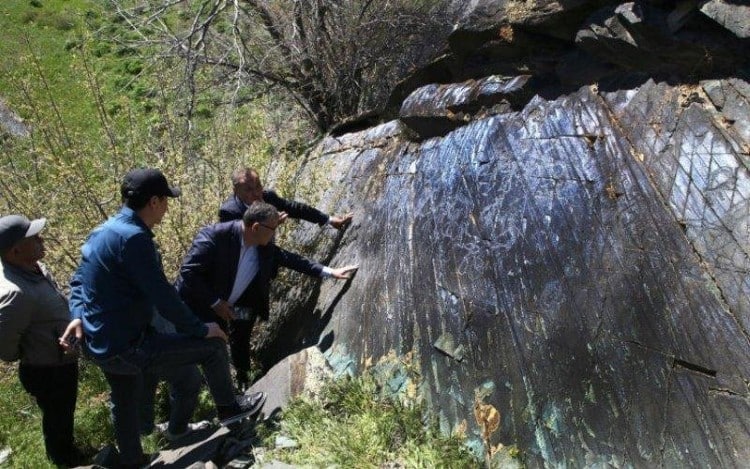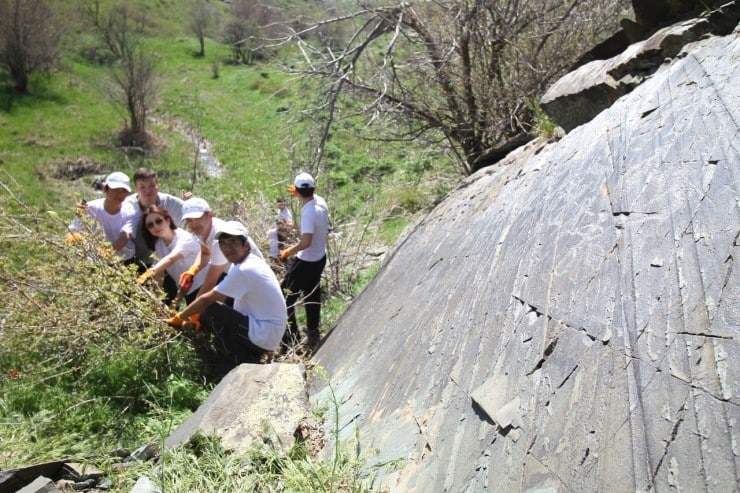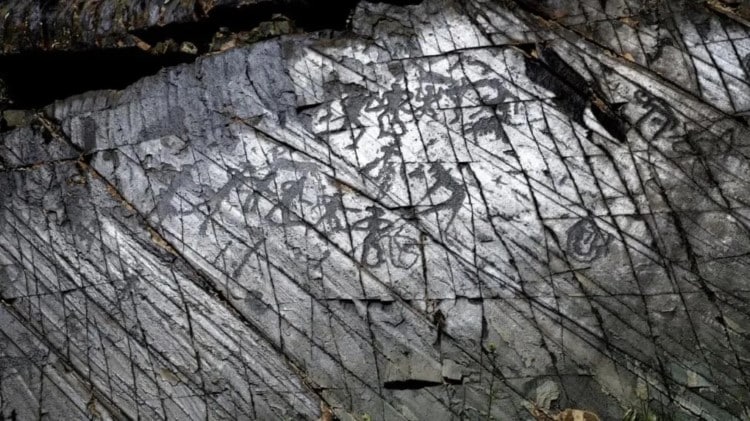
Photo: Department of Internal Policy of the Akimat of the Zhambyl Region
Cleaning campaigns are good news for the environment. But thanks to one of such missions in Kazakhstan, fans of archeology also have something to be excited about. During a cleanup in the the Zhambyl (or Jambyl) region, volunteers came across about 100 petroglyphs, dating back to the Bronze or Iron ages, roughly 3,500 years ago.
After the rock art was spotted, local archeologists were brought in to examine them. Petroglyphs are engravings created by chipping away at a rock face, done thousands of years ago. The ones recently found in Kazakhstan depict both hunters and animals, such as double-humped camels and argali (a type of wild sheep). The rock art was spotted in an area that is 66 feet to 82 feet long and 5 feet to 6.6 feet high per Sauran Kaliyev, an archeologist interviewed by local outlet Astana Times.
However, it appears that it’s not the first time academics have heard about this place. Kazakh archeologist Viktor Novozhenov, an archeologist with the Saryarka Archaeological Institute who was not part of the cleanup, said in an interview with Live Science that the site is “not at all new.”
The archeologist added that the site has not been examined thoroughly, nor has the rock art been documented in a peer-reviewed journal. The main obstacle to this is the lack of funding needed to properly record these petroglyphs. “We don’t have enough experts and funds for needed analyses and [fieldwork],” he confesses.
That’s why, when Kazakh archeologists uncover new rock art, they prefer to keep the location a secret until it can be documented. On top of the need for resources, one of the main challenges in studying such sites is their potential destruction by vandals or other individuals.
For now, local officials will continue to examine the site. “We will continue our research and conduct a state examination as we intend to designate it a site of national or international significance to be included in the list of state-protected sites,” says Kuanysh Daurenbekov, director of the Directorate for the Protection and Restoration of Historical and Cultural Monuments.
During a cleanup in the the Zhambyl (or Jambyl) region of Kazakhstan, volunteers came across about a 100 petroglyphs, dating to the Bronze or Iron ages, roughly 3,500 years ago.

Photo: Department of Internal Policy of the Akimat of the Zhambyl Region
The rock art was spotted in an area that is 66 feet to 82 feet long and 5 feet to 6.6 feet, and depict both hunters and animals, such as double-humped camels and wild sheep.

Photo: Department of Internal Policy of the Akimat of the Zhambyl Region
h/t: [LiveScience]
Related Articles:
2,700-Year-Old Petroglyphs Are Discovered Under Moss in Sweden
Ancient Rock Art Depicts Psychedelic Music and Dance in Peru
Ancestral Pueblo Carvings Discovered in the Southwest May Have Been a Calendar
3,000-Year-Old Bronze Age Arrow is Discovered at Melting Ice in Norway
